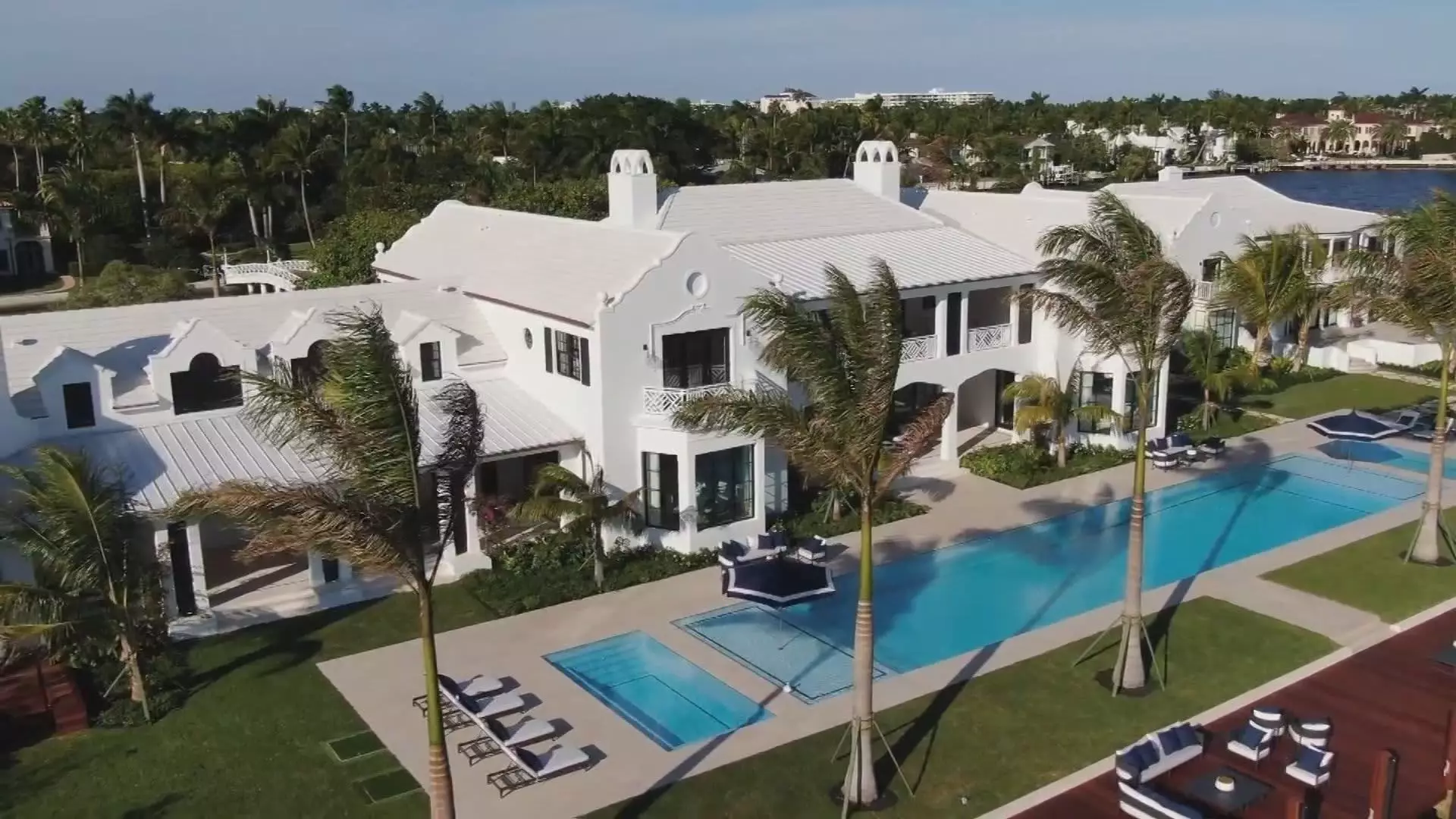In the realm of ultra-luxury real estate, certain U.S. markets are exhibiting remarkable resilience despite a global downturn. A recent report by Knight Frank indicates that sales of residential properties exceeding $10 million have surged significantly in key cities such as New York, Miami, and Palm Beach during the second quarter of the year. This trend stands in stark contrast to the overall decline observed in other regions across the globe. The data highlights an increasing preference among affluent buyers for exclusive and rarefied properties, suggesting that the ultra-wealthy are carving out their own niche even as broader economic challenges loom.
Among the standout performers, Palm Beach posted a striking 44% increase in sales of homes priced at $10 million or more. Miami was not far behind, with a notable 27% rise. New York City, while the leading market in terms of sheer sales volume—with 72 such transactions—still managed to record a 16% uptick. Meanwhile, the luxury market in Los Angeles faced challenges, witnessing a 29% drop largely attributed to the imposition of a new “mansion tax.” This financial burden impedes the otherwise lucrative market, suggesting a temporary cooling in a city renowned for its opulent properties.
The substantial sales figures in Palm Beach further underscore its transformation into a lucrative haven for high-net-worth individuals. The landmark $150 million sale of a private island signals a robust demand for exclusive properties, which continue to attract significant international interest. The prominence of Palm Beach as a luxury destination is complemented by record-breaking sales such as the $148 million estate transaction, further establishing its reputation.
Despite strong performance in both Miami and Palm Beach, it is New York City that reigns supreme when it comes to sales of ultra-luxury residences. Notably, the city’s robust infrastructure, cultural offerings, and financial opportunities remain highly attractive to wealthy buyers. The recent sale of a penthouse in the Aman New York for $135 million exemplifies the city’s persistent allure as a hub for global elites. These sales reflect a competitive landscape where New York’s storied prestige continues to foster demand.
Conversely, Miami is rapidly establishing itself as a formidable contender, drawing ultra-wealthy individuals seeking a more relaxed lifestyle, favorable tax regimes, and vibrant community dynamics. The city’s soaring property values are a testament to its growing appeal; luxury developments and a warm climate have enabled Miami to position itself as an attractive alternative to New York’s fast-paced urban environment.
The report from Knight Frank does not solely encapsulate the dynamics within the U.S. While the American ultra-luxury market is thriving, global trends reveal a mixed bag. The overall sales of properties exceeding $10 million in the eleven key luxury markets tracked fell by 4% compared to the prior year, amounting to $8.5 billion. Dubai, however, continues to emerge as the epicenter for ultra-luxury sales, boasting a remarkable 85 transactions in the same quarter. This meteoric rise has drawn affluent buyers worldwide, attracted by the city’s favorable tax policies and regulatory landscape.
In stark contrast, London’s luxury market has contracted significantly, with a staggering 47% drop in sales attributed to anxieties regarding increasing taxation on the wealthy. This discrepancy raises important questions about long-term stability and growth in luxury markets, which often depend on favorable economic conditions and buyer sentiment.
As we observe rising interest rates around the globe, the ultra-luxury market appears poised for nuanced shifts. Real estate experts predict that decreasing interest rates may spur increased transaction volumes into the next year, potentially revitalizing activity even among hesitant buyers. What remains clear is that, amid economic uncertainty, the ultra-wealthy continue to invest in trophy properties, solidifying the notion that demand for distinctive real estate remains resilient. Overall, the evolving landscape presents both challenges and opportunities in a sector that appears ready to adapt and flourish.

